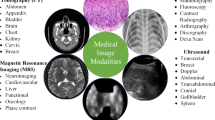Abstract
In this study, we propose an ensemble model for the detection of diabetic retinopathy (DR) illness that is driven by transfer learning. Due to diabetes, the DR is a problem that affects the eyes. The retinal blood vessels in a person with high blood sugar deteriorate. The blood arteries may enlarge and leak as a result, or they may close and stop the flow of blood. If DR is not treated, it can become severe, damage vision, and eventually result in blindness. Medical experts study the colored fundus photos for this reason in order to manually diagnose disease, however this is a perilous technique. As a result, the condition was automatically identified utilizing retinal scans and a number of computer vision-based methods. A model is trained on one task or datasets employing the transfer learning (TL) technique, and then the pre-trained models or weights are applied to another task or dataset. Six deep learning (DL)-based convolutional neural network (CNN) models were trained in this study using huge datasets of reasonable photos, including DenseNet-169, VGG-19, ResNet101-V2, Mobilenet-V2, and Inception-V3. We also applied a data-preprocessing strategy to improve the accuracy and lower the training costs in order to improve the results. The experimental results demonstrate that the suggested model works better than existing approaches on the same dataset, with an accuracy of up to 98%, and detects the stage of DR.
Graphical Abstract
















Similar content being viewed by others
Data availability
The dataset generated and/or analyzed during the current study is available upon reasonable request from the corresponding author. However, datasets are available as open source.
References
Qummar S, Khan FG, Shah S, Khan A, Shamshirband S, Rehman ZU, Khan IA, Jadoon W (2019) A deep learning ensemble approach for diabetic retinopathy detection. In IEEE Access 7:150530–150539. https://doi.org/10.1109/ACCESS.2019.2947484
Online available at: https://apps.who.int/iris/handle/10665/269284, Accessed 01 Oct 2022
Alyoubi WL, Shalash WM, Abulkhair MF (2020) Diabetic retinopathy detection through deep learning techniques: a review. In Informatics in Medicine Unlocked 20(100377):1–11. https://doi.org/10.1016/j.imu.2020.100377
National eye institute, Online available at: https://www.nei.nih.gov/, Accessed 11 Nov 2022
Understanding glaucoma test results: what do they mean? Online available at: https://www.goodeyes.com/glaucoma/what-do-glaucoma-test-results-mean/, Accessed 21 Nov 2022
Kumar JRH, Seelamantula CS, Kamath YS, Jampala R (2019) Outperforms cup-to-disc ratio for glaucoma prescreening. Sci Rep 9(7099):1–9. https://doi.org/10.1038/s41598-019-43385-2
Online available at: https://sceyes.org/blog/five-things-to-know-about-the-cost-of-glaucoma-treatment, Accessed 11 Nov 2022
Glaucoma Surgery Cost in India- Best Hospitals & Cost, a blog by Priyanka Dutta Deb posted on ClinicSpots: https://www.clinicspots.com/blog/glaucoma-surgery-cost-in-india-best-hospitals-and-cost, Accessed 11 Aug 2022
Saxena A, Vyas A, Parashar L, Singh U (2020) A glaucoma detection using convolutional neural network. In IEEE International Conference on Electronics and Sustainable Communication Systems (ICESC) 19876975:815–820. https://doi.org/10.1109/ICESC48915.2020.9155930
Bhupati A (2020) Transfer learning for detection of diabetic retinopathy disease. Dissertation, School of Computing, National College of Ireland. https://doi.org/10.13140/RG.2.2.24009.57441, Online available at: https://norma.ncirl.ie/4316/1/alekhyabhupati.pdf
Shinde R (2021) Glaucoma Detection in retinal fundus images using U-Net and supervised machine learning algorithms. Intell-Based Med Sci Direct 5(100038):1–15. https://doi.org/10.1016/j.ibmed.2021.100038. (Elsevier)
Norouzifard M, Nemati A, Gholamhosseini H, Klette R, Nouri-Mahdavi K, Yousefi S (2018) Automated glaucoma diagnosis using deep and transfer learning: proposal of a system for clinical testing. In IEEE conference on Image and Vision Computing, New Zealand, pp 1–6. https://doi.org/10.1109/IVCNZ.2018.8634671
Mayya V, Sowmya KS, Kulkarni U, Surya DK, Acharya UR (2022) An empirical study of preprocessing techniques with convolutional neural networks for accurate detection of chronic ocular diseases using fundus images. Appl Intell 53:1548–1566. https://doi.org/10.1007/s10489-022-03490-8
Guangzhou A, Omodaka K, Hashimoto K, Tsuda S, Shiga Y, Takada N, Kikawa T, Yokota H, Akiba M (2019) Nakazawa T (2019) Glaucoma diagnosis with machine learning based on optical coherence tomography & color fundus images. J Healthc Eng 4061313:1–9. https://doi.org/10.1155/2019/4061313. (Hindawi)
Shukla M M, Tripathi B K, Nagle M, Chaurasia B K (2023) COVID-19 & lung disease detection using deep learning. In IEEE international conference on computational intelligence and communication networks (CICN 2022). Prince Mohammad Bin Fahd University (PMU), Kingdom of Saudi Arabia (KSA), pp 430–434. https://doi.org/10.1109/CICN56167.2022.10008269
Vijayakumar T (2019) Comparative study of capsule neural network in various applications. J Artif Intell Capsule Netw 01(01):19–27
Song WT, Lai IC, Yi-Zhu Su (2021) A statistical robust glaucoma detection framework combining Retinex CNN, and DOE using fundus images. In IEEE Access 9:103772–103783. https://doi.org/10.1109/ACCESS.2021.3098032
Shen D, Wu G, Suk H-II (2017) Deep learning in medical image analysis. Annu Rev Biomed Eng 21(19):221–248. https://doi.org/10.1146/annurev-bioeng-071516-044442
Younas F, Usman M, Yan WQ (2023) A deep ensemble learning method for colorectal polyp classification with optimized parameters. Appl Intell 53:2410–2433. https://doi.org/10.1007/s10489-022-03689-9
Descripted at: https://iq.opengenus.org/xception-model/ Accessed 18 Oct 2022
Dataset-3 Online available at: https://github.com/smilell/AG-CNN, Accessed 15 March 2022
Liu L, Mai X, Wang X, Jiang L, Liu H (2019) Attention based glaucoma detection: a large-scale database and CNN model. IEEE Trans Med Imaging 39(2):413–424. https://doi.org/10.1109/CVPR.2019.01082
The updated version of Dataset-1 is available on personal github: https://github.com/rajharsh72/IEEE-Fundus-Updated, Accessed 15 March 2022
Article Online available at: https://www.educative.io/answers/what-is-the-swish-activation-function Accessed 16 Nov 2022
Image available online at: https://www.researchgate.net/figure/Retinal-blood-vessels-appearance_fig1_258012337 Accessed 21 Nov 2022
Image online available at: https://geekymedics.com/fundoscopic-appearances-of-retinal-pathologies/, Accessed 06 Nov 2022
Author information
Authors and Affiliations
Contributions
The idea and problem formulation along with proposed solution, result analysis, and by corresponding author and supervisor, and verifies by all other authors.
Corresponding author
Ethics declarations
Conflict of interest
The authors declare no competing interests.
Additional information
Publisher's note
Springer Nature remains neutral with regard to jurisdictional claims in published maps and institutional affiliations.
Rights and permissions
Springer Nature or its licensor (e.g. a society or other partner) holds exclusive rights to this article under a publishing agreement with the author(s) or other rightsholder(s); author self-archiving of the accepted manuscript version of this article is solely governed by the terms of such publishing agreement and applicable law.
About this article
Cite this article
Chaurasia, B.K., Raj, H., Rathour, S.S. et al. Transfer learning–driven ensemble model for detection of diabetic retinopathy disease. Med Biol Eng Comput 61, 2033–2049 (2023). https://doi.org/10.1007/s11517-023-02863-6
Received:
Accepted:
Published:
Issue Date:
DOI: https://doi.org/10.1007/s11517-023-02863-6




